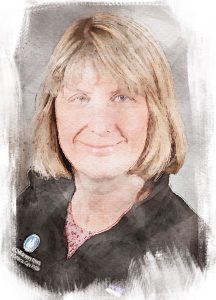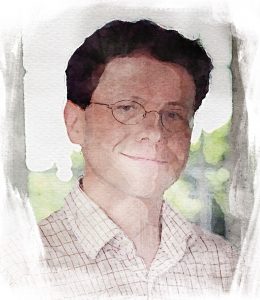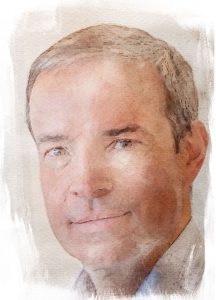It’s already more than a $160 billion market and is expected to grow to almost $550 billion over the next ten years. But while companies and investors have learned how to profit handsomely from them, rare diseases are still a healthcare desert to most people who suffer from them. Of the more than 7,000 such diseases that exist, only 5% have approved treatments.
A growing number of infants are diagnosed at birth, thanks to newborn screening and the introduction of genetic sequencing in a handful of hospitals and health systems. But more likely for patients and their families is an arduous “diagnostic odyssey,” going from doctor to doctor, for years before learning the cause of their condition and then often finding out no treatment is available. To them, the startling successes out there are also a painful reminder that they have been shut out from hope.
That may be changing. Until recently, developing a rare disease treatment was a one-in-a-million gambit that few companies pursued, but tody, PhRMA reports that there are more than 560 drugs for rare diseases in clinical trials. While most of the drugs approved for rare diseases are among the most expensive in the world, including Novartis Gene Therapy’s Zolgensma (more than $2 million per patient) and Spark’s Luxturna ($850,000 per patient), there is hope that finding such drugs could become easier and they could become more affordable.
The wider use of gene sequencing—including long-read sequencing—robust databases, artificial intelligence (AI) analytical programs, and spatial genomics have opened opportunities for rare disease diagnosis and treatment. Companies such as Illumina, Bionano Genomics, Centogene, Genomenon, Oxford Nanopore, Charles River Labs, and Metabolon have brought new technologies, services, and energy to the field.
Non-profits are also getting into the game. The Genetic Alliance (GA) operates a massive database of rare diseases, advocacy organizations, and characteristics of these conditions. President and CEO Sharon Terry says they estimate that more than one in ten of the 2,000 organizations contributing to GA’s database aim to develop their own drug. She co-founded an organization doing just that, PXE International, after her own children were diagnosed with pseudoxanthoma elasticum in 1994.
The feasibility of non-profits finding drugs has been established by groups like the Progeria Research Foundation (PRF), which was started by a pair of pediatricians (Leslie Gordon and Scott Berns) who were also parents of a child, Sam Gordon Berns, who was diagnosed with the disease in 1998.

Through a combination of planning, perseverance, and luck, by 2003 they were able to find the gene for this ultra-rare disease (400 or so cases worldwide). Just 17 years later, the first drug for progeria, Zokinvy (lonafornib from Eiger), was launched. It can extend life by an average of 2.5 years. It is also one of the most expensive drugs in the world. A follow-up study of lonafornib with everolimus was recently completed. And PRF is also looking into gene therapy and CRISPR. This type of progress was previously unfathomable. “We now have kids [with progeria] planning to go to college and asking about fertility issues,” says Monica Kleinman, M.D., a physician at Boston Children’s Hospital who was principal investigator on several trials of Lonafarnib in progeria.
What’s more, service companies are starting to cater to the needs of non-profits as well as their traditional clients. Charles River Laboratories (CRL) provide services including preclinical testing, safety and toxicology, and IND filing. “The trend in rare diseases is that a lot of smaller organizations, even family foundations, are raising money to start their own programs,” says David F. Fischer, Ph.D., executive Science Director at CRL.

Sequencing has made it possible for a lot of these organizations to start out with the mutation in hand, but the next critical part is testing cell lines. “We execute those studies, grow the cells, design the drugs, test them for efficacy, and then put them through safety trials,” Fischer says. Timelines have shortened thanks to these tools and services, and CRL, Fisher says, discounts the research for smaller organizations. “After all, a program for ten patients is not a biotech,” he says.
Advances in Sequencing and Other Tests
Genetic sequencing has provided a big step forward for diagnosing rare disease. But while it has become cheaper, faster, and more accurate, access is still restricted, in large part because many insurers will not pay for the testing. But there are other problems too.
“I did the first short read Illumina analysis of a family trio 10 or 11 years ago, and ever since that time, I’ve been trying to get this to every child who needs it,” says Ryan Taft, Ph.D., vice president of scientific research at Illumina. Besides reimbursement, he says, the infrastructure and tools to make sequencing widespread still need to be implemented, and “clinicians need to understand that this is not off in the future. Whenever they are assessing a hard-to-diagnose patient, sequencing should come to mind.”
A recent paper shows sequencing can benefit infants in many hospital settings. The NICUSeq Randomized Time-Delayed Trial included 354 infants in ICUs from a range of races and ethnicities at five US academic medical centers. “There are a lot of single center studies showing the benefits of WGS in this population,” says Taft, who was a co-author of the study. “We wanted to show that this can be beneficial anywhere, and for any patients.”
Infants who received whole-genome sequencing (WGS) were twice as likely to get a diagnosis and a change of management than those who did not get early sequencing (JAMA Pediatrics, Sept. 27, 2021). “About 30% of infants received a diagnosis,” says Taft. “That is consistent with other places doing regular sequencing of these patients, including in the U.K. and at Rady [Children’s Institute for Genomic Medicine.]”Results were consistent across the sites. Notably, the rate of diagnosis and change of management doubled for both patients who received early (15 day) and delayed (60 day) results. “That tells us that standard of care is front loaded,” says Taft. “Once the infants test negative by standard means, they are not getting any other testing or change in management.” WGS results, however, lead to changes in at least a third of these children’s care.
There is also increasing interest in new long-read technologies. Danny Miller, M.D., Ph.D., is a pediatrics and medical genetics resident at the University of Washington and Seattle Children’s Hospital who has worked with both Oxford Nanopore Technologies (ONT) and PacBio long-read systems. He sees the potential for long reads to solve tough cases, which often take years. Miller is enthusiastic about long-read sequencing in part because of a recent study he worked on using adaptive sampling on ONT’s GridION, which found 100% sensitivity for structural variants (The American Journal of Human Genetics, July 2021). Some researchers are doing “ultra-long” sequencing, with average read lengths over 100kb, with leads being recovered that are 1 to 2 megabases or longer. The longest recorded being about 4.2 megabases.
“We keep running into walls, and the long reads make it easier to find things such as structural variants,” he adds. “Long read is what everyone wants to do, especially for challenging cases.” (For more, see “Long Reads Can Make Short Work of Rare Disease Diagnostics,” Clinical OMICS, July/August 2021).
Taft is optimistic about long-reads too, but has reservations. “Long-read technologies have a place and some of what they can do is fantastic, but whether they close major gaps in sequence-based diagnostics I’m not sure,” he says. “I have yet to see robust evidence that’s the case, and I think there is a bit of misinformation out there about how much you can do with short reads.”
He points out that even very complex variants, including short tandem repeats and structural variants, can be detected using short reads. “In the paper we just published, 30-40% of the variants were complex copy numbers and some were structural,” he says, referring to the JAMA Pediatrics study.
Building Data Banks
While better—and cheaper—sequencing has provided significant answers for rare diseases, it doesn’t offer all the answers. Another key is having access to data, and a range of it. Public databases now abound such as the Online Mendelian Inheritance in Man (OMIM), the Human Phenotype Ontology (PHO), and ClinVar, which aggregates variants.
These are being steadily built up. Just recently, NHGRI renewed three awards totaling $73.2 million over five years for ClinGen, which collects and archives clinically relevant information about genes and genomic variants. According to Jonathan Berg, M.D., Ph.D., who leads the ClinGen team at University of North Carolina, besides curating genes, part of the group’s effort will be to “harmonize and standardize functional assays, which right now can be quite varied between labs.”
The Broad Institute of MIT and Harvard, meanwhile, is expanding the Broad’s Center for Mendelian Genomics as part of the newly NIH-funded Genomics Research to Elucidate the Genetics of Rare Disease (GREGoR) consortium. “We will be applying new technologies, such as long read sequencing, CRISPR, metabolomics, lipidomics, and epigenetic studies,” says Anne O’Donnell-Luria, M.D., Ph.D., one of the co-leaders of the new Center.
Private companies that have also pursued this type of work.Metabolon, for example, can screen for more than 1,000 molecules in a single plasma sample, providing information about thousands of diseases in a single run. Its platform uses liquid chromatography, mass spectrometry, and advanced analytics, including machine learning and artificial intelligence (AI). It can identify dysfunctional metabolism in numerous pathways, including amino acid, lipid, carbohydrate, nucleotide, and cofactor metabolism and transport.
The company recently launched the first of its new SmartPanel offerings—a curated library of metabolites affecting microbiome function. With Metabolon’s propriety Heliogram tool, researchers can visualize data relevant to 13 pathways.
“The biggest thing we are trying to do is decrease the diagnostic odyssey,” says Adam Kennedy, Ph.D., associate director of Clinical Metabolomics at Metabolon. One of their success stories is a 6-year-old girl named Marley who was diagnosed, using exome sequencing, with gain of function variants in ornithine decarboxylase (ODC). She was born with silver hair, eventually had complete hair loss, and had significant developmental delays. Using Metabolon’s platform, Marley’s doctors were able to repurpose the drug eflornithine for her treatment, leading to “remarkable improvement in both neurological symptoms and cortical architecture.” (eLife, July 20, 2021).
Besides helping with diagnoses, Metabolon’s platform can be used to select drug candidates, track responses to treatments, and in other steps of drug development. The company has been building this data trove for about 20 years, “We have tested upward of 300 tissues,” says Kennedy.

Centogene, meanwhile, has developed a global proprietary rare disease platform using real-world data with more than 3.9 billion weighted data points from approximately 600,000 patients from more than 120 countries. It includes genomic, proteomic, and metabolomic data. Centogene says it has the largest mutation database of rare diseases in the world. One of the company’s goals is to lower the risk of drug development. “For pharma, we do three main things,” says Andrin Oswald, M.D., and CEO of Centogene. “We can provide biomarkers, some of which are proprietary. We can help select patients for trials, and we can help find new patients for drugs already developed.”
In one recent study using Centogene’s database and others, researchers not only identified a new rare disease, they were able to determine it might be preventable.
The study involved 20,248 families with children suffering from neurodevelopmental disorders. Approximately one-third of the affected children had multiorgan structural defects, including microcephaly, facial dysmorphism, foot syndactyly, renal agenesis, alopecia, iris coloboma, and heart defects. Those patients underwent exome and genome sequencing. These defects are very rare and usually of unknown origin.
The team identified homozygous mutations in WLS, which encodes the Wnt ligand secretion mediator (also known as Wntless or WLS) in 10 affected persons from 5 unrelated families. (The Wnt ligand secretion mediator is essential for the secretion of all Wnt proteins.) They named this new syndrome Zaki, after one of the paper’s authors. (Chai et al., NEJM, Sept. 30, 2021). The work was led by scientists of the Rady Children’s Institute for Genomic Medicine and A*STAR in Singapore.
Two mouse models of the disease were developed and treatments tested. The researchers found that a Wnt agonist partially restored embryonic development in these models, suggesting this condition could be prevented with prenatal treatment. Genomenon’s Mastermind data analytics tool has indexed the full text of millions of scientific articles and prioritizes searches to generate the most relevant results many times faster. “We are on a mission to curate the entire human genome,” says Genomenon CEO Mike Klein. The company has indexed 8.3 million articles so far, and adds about 10,000 articles per week. Its algorithms are AI-informed. Any search can turn up between zero to tens of thousands of hits. “It’s very powerful to find zero hits,” Klein adds.
One hit can be enough though, as physicians at Rady Children’s found when they were racing to diagnose a week-old baby with signs of immune deficiency. While the search of genetic databases narrowed things down, it just took one reference from the Mastermind database to determine that a single variant was impeding activity of a single protein. The baby’s treatment was changed accordingly, leaving him “healthy and thriving.”
More variants, more technologies
As more variants are discovered, there will be a continued need to understand how relevant they are to human health.
On May 27, 2020 the international gnomAD team, comprising more than 100 scientists, released seven papers in Nature publications about genetic variation based on study of more than 125,000 exomes from across the world. The team found 241 million variants that were either small single point mutations, insertions or deletions. About 443,000 of these were deemed to be likely to cause a loss of protein function.
New approaches include Fabric Genomics’ AI-powered decision support software, GEM, for prioritizing variants. This is traditionally a time-consuming and person-intense process, given there are an estimated 4-5 million variants in the genome.
A recent paper supports the company’s claim that its algorithms speed diagnosis (Genome Medicine, October 14, 2021). Rady Children’s Institute for Genomic Medicine’s President and CEO Stephen Kingsmore is senior author of the study, which found that in a retrospective study comprising data from 119 infants, GEM ranked more than 90% of the causal genes among the top or second candidates.
“Our algorithms are sensitive and efficient,” says Jeanette McCarthy, M.P.H., Ph.D., and senior director of Scientific Programs at Fabric. Fabric is working with Rady on NICU and PICU cases, but also looking at doing re-analyses for patients who are on that notorious “diagnostic odyssey.”

Bionano is also playing a part. It uses its Saphyr optical genome mapping system to uncover more variants. “Sequencing only picks up a small fraction of pathogenic findings,” says Erik Holmlin, Ph.D., president and CEO. “As many as 70% of patients are not getting answers, and we are focused on finding those for them.”
Saphyr is used for structural variation detection and genome assembly. It is based on a combination of Bionano’s proprietary NanoChannel arrays and optical genome mapping. The system images DNA at the single-molecule level with average lengths of about 350,000 base pairs. In one recent study, Optical Genome Mapping was used to diagnose facioscapulohumeral muscular dystrophy (FSHD), which requires long, intact DNA molecules to detect contractions of D4Z4 repeats (J Mol Diag. Aug 2021). The system was highly accurate and findings were reproducible.
Will advances such as these help us better understand the new wave of variants and lead to the surge of treatments rare disease patient families yearn for? How quickly will that occur? And how worldwide will the phenomenon be?
Those questions are still open. But as the story of progeria, which began so bleakly, tells us: “You cannot assume there is a limit to what we can do to expand lifespan,” says Kleinman.













